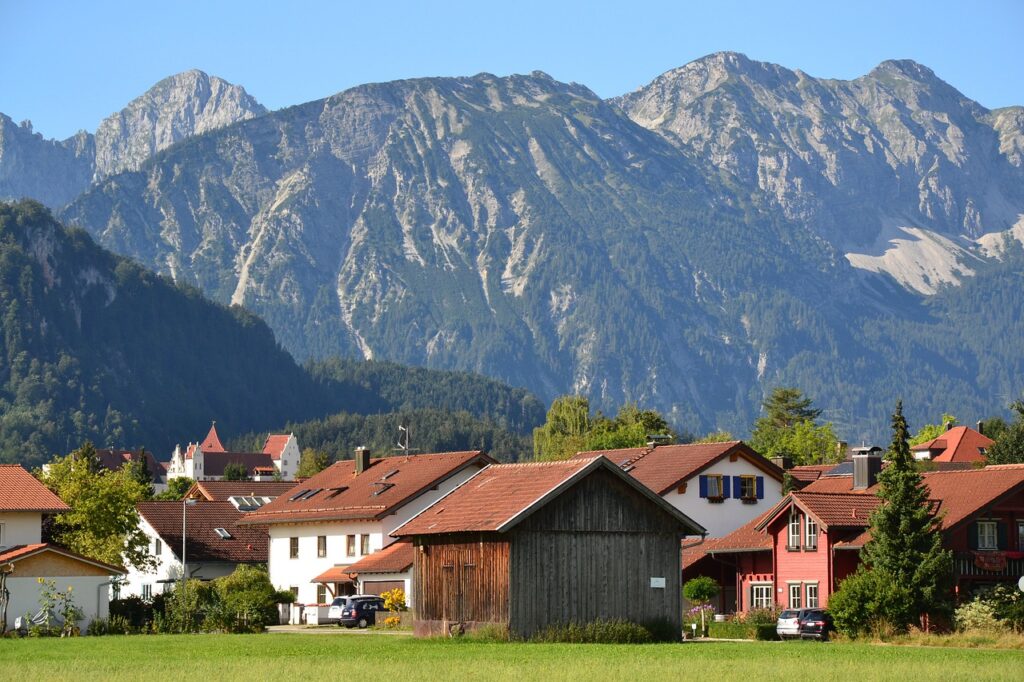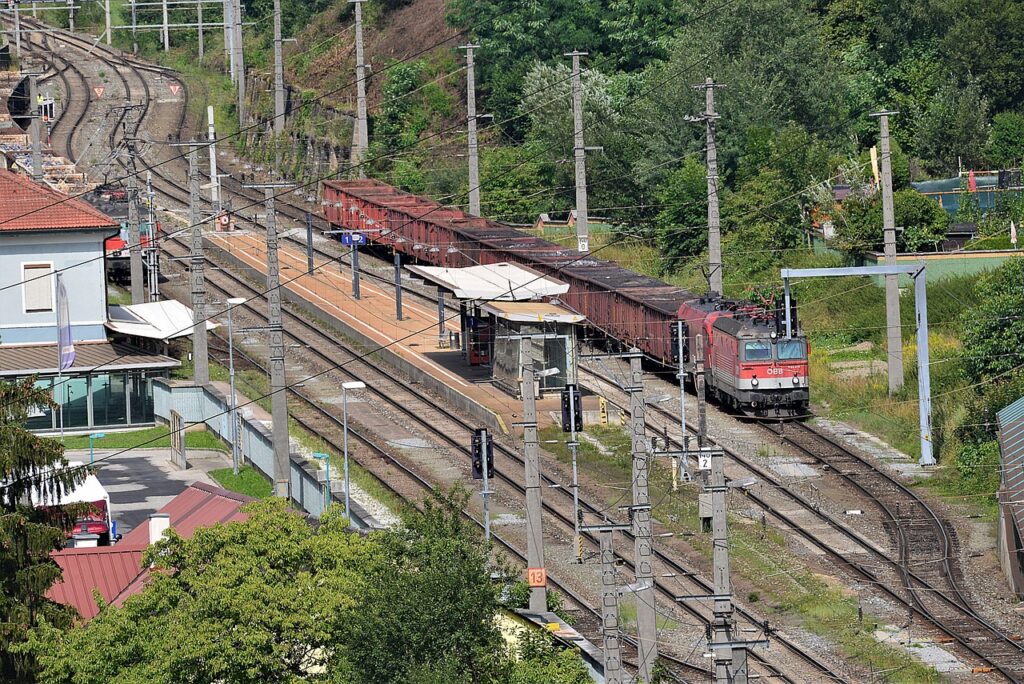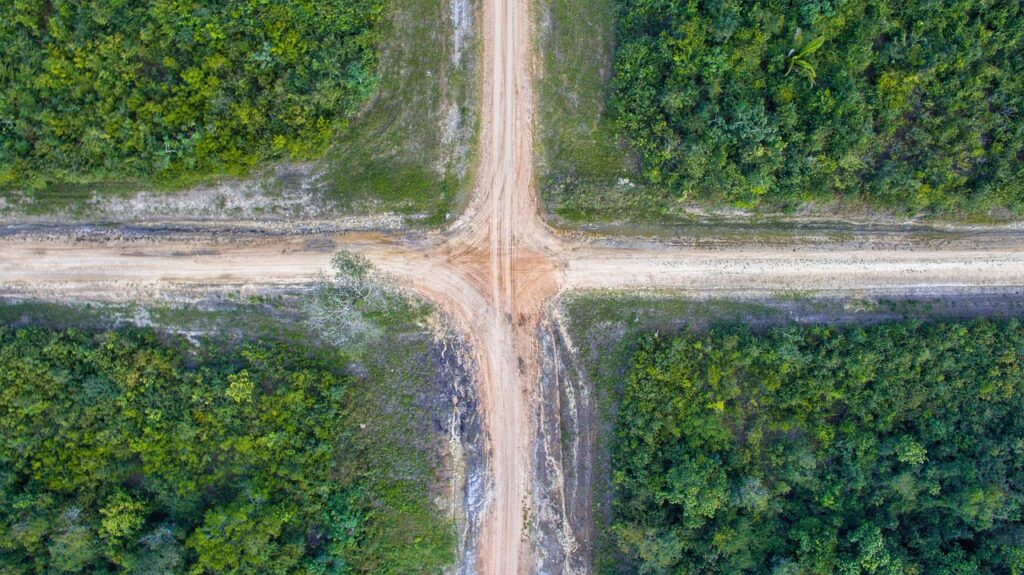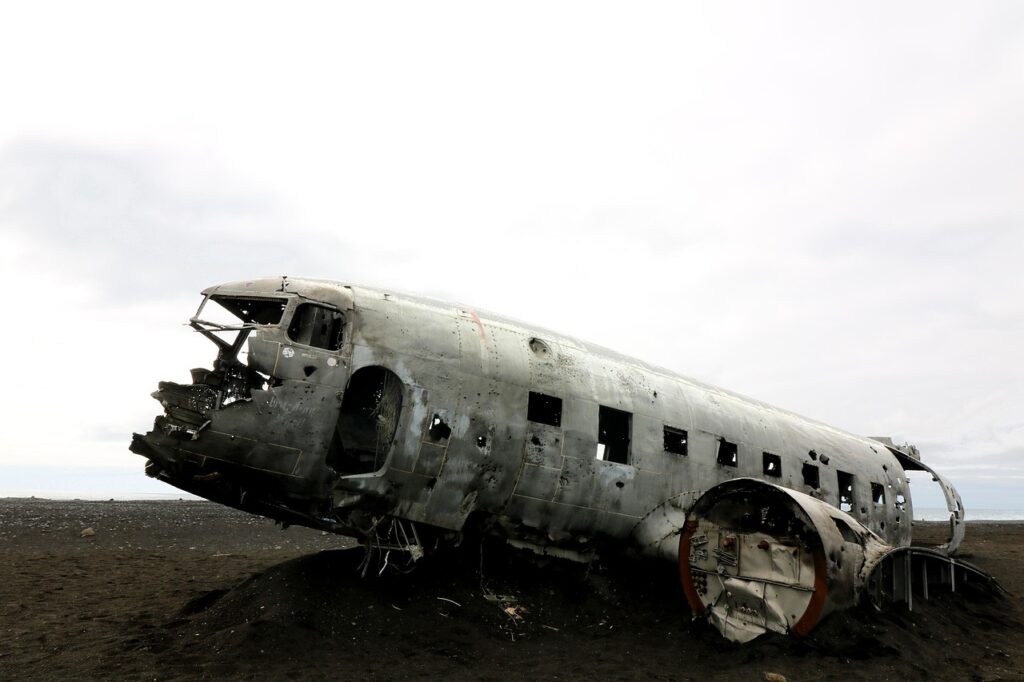
Few films capture the spirit of resilience and the thrill of an impossible dream quite like John Sturges’ 1963 masterpiece, “The Great Escape.” More than just a war film, it’s a testament to human ingenuity, courage, and camaraderie, etching itself into the annals of cinematic history with its unforgettable characters and breathtaking sequences. While many fans are familiar with the gripping narrative of Allied prisoners of war daring to tunnel their way out of a supposedly escape-proof German camp during WWII, the meticulous effort behind bringing this true story to the silver screen, particularly in its choice of authentic filming locations, often remains a fascinating, yet underexplored, aspect.
Indeed, “The Great Escape” stands as a monumental achievement in filmmaking, celebrated for its stellar ensemble cast including legends like Steve McQueen, James Garner, and Charles Bronson, and its masterful blend of action, suspense, and even a touch of humor. But what truly anchors this timeless classic in reality, despite its Hollywood treatment, is the strategic decision by its creators to immerse the production in the very landscapes that echoed the film’s setting. Far from an abstract backlot creation, the film leveraged the natural beauty and historical ambiance of Germany, predominantly Bavaria, to lend an unparalleled authenticity to its world.
Join us as we embark on an exhaustive journey, delving deep into the actual German locales that served as the backdrop for “The Great Escape.” From the intricate construction of the ‘Stalag Luft’ set to the specific railway stations and picturesque riverbanks that witnessed the prisoners’ desperate bids for freedom, we’ll uncover the rich details, trivia, and behind-the-scenes insights that make these locations as compelling as the story itself. Prepare to discover how these real places became integral to the film’s enduring legacy, offering fans a unique opportunity to connect with the cinematic magic and historical weight of one of Hollywood’s most beloved war epics.
1. **Bavaria Film Studio and the ‘Stalag Luft’ Set**It might surprise many to learn that the original blueprint for “The Great Escape” involved a significantly more Americanized production. Initial plans considered constructing the entire ‘Stalag Luft’ in California, with only post-escape scenes to be filmed in Europe by a Second Unit. However, in a fascinating turn of events that speaks to the practicalities of filmmaking, the production ultimately shifted to Germany, primarily due to the convenience and, dare we say, economy of securing enough extras. This decision cemented the film’s commitment to authentic German settings.
The core of the prison camp, ‘Stalag Luft,’ was a massive set meticulously built outdoors on what had once been forested land directly adjacent to the historic Geiselgasteig Studios in Munich. These studios boast a significant legacy, having previously hosted productions for renowned films like Stanley Kubrick’s 1957 WWI drama “Paths of Glory,” the 1958 epic “The Vikings,” and musicals such as “The Sound of Music” (1965) and “Cabaret” (1972). Even fantasies like “Willy Wonka & the Chocolate Factory” (1971) and “The Neverending Story” (1984), as well as Oliver Hirschbiegel’s “Downfall” (2004), utilized these very grounds.
The creation of the ‘Stalag Luft’ set was an extensive undertaking. The agreement stipulated that for every tree removed to clear the forested area for construction, two new trees would be planted after production concluded. This fair deal has left a lasting mark; today, the area is a thriving pine forest immediately east of the studio lot, with no visible trace of the original filming remaining. This comprehensive approach meant that the majority of the film’s camp scenes, including the meticulous detailing of the prisoners’ daily lives and the arduous work on the tunnels, were brought to life within this purpose-built German setting, laying a foundational layer of authenticity for the entire production.
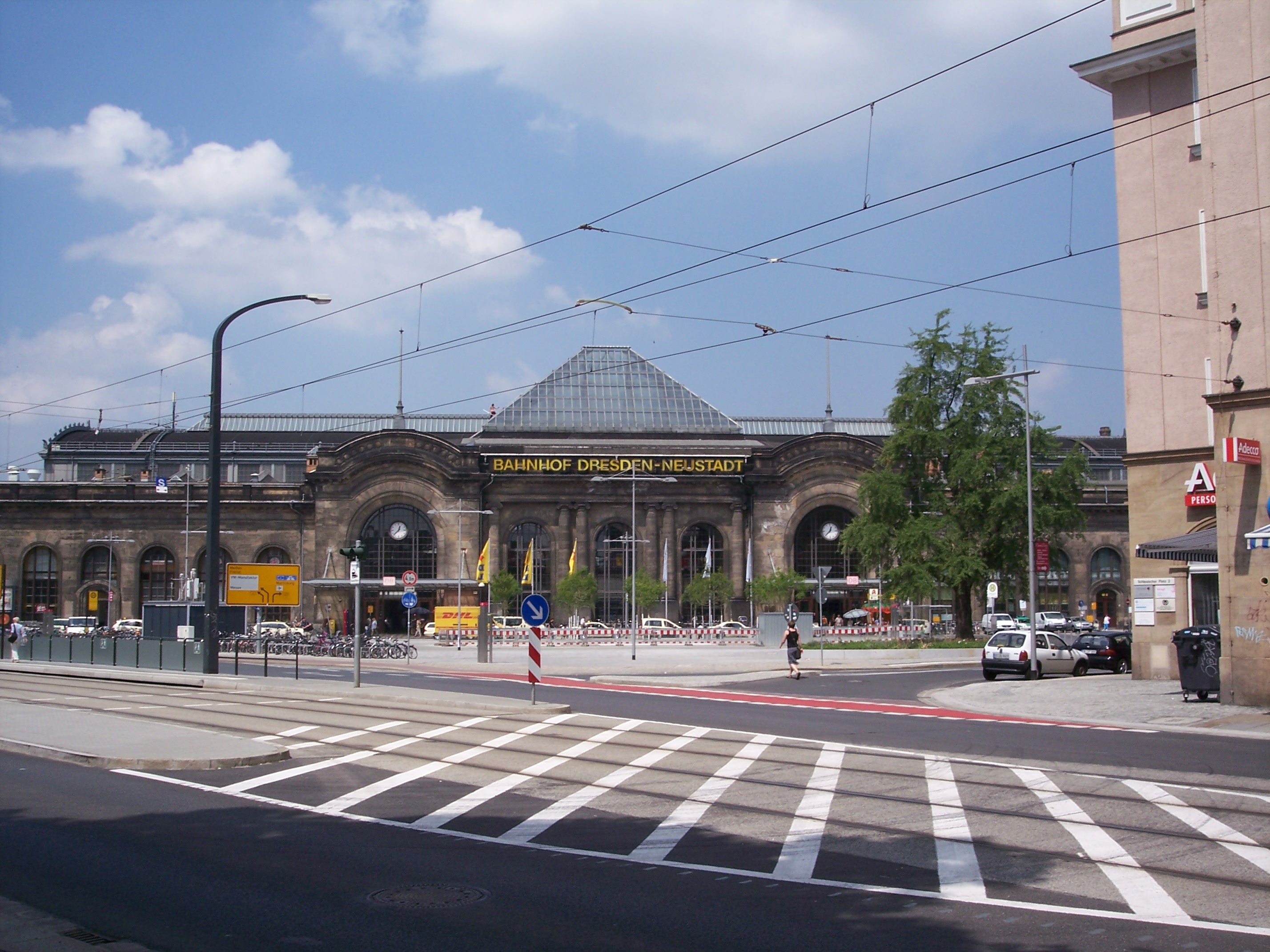
2. **Großhesselohe Station – ‘Neustadt Station’**Once the escapees successfully breached the perimeter of ‘Stalag Luft,’ the film transitioned from the studio-built camp to real German locations. One of the very first, and closest, of these real-world settings to the Geiselgasteig Studios was ‘Neustadt Station,’ where a significant number of the escapees attempt to board a train as part of their daring plan to flee captivity. This tense scene captures the bravery and desperate hope of the prisoners as they try to outwit their captors and attain freedom.
The real location for ‘Neustadt Station’ was Großhesselohe Station, situated on the Munich-Holzkirchen line, just west of Geiselgasteig. The area can be a source of some confusion for fans attempting to locate the exact spot, as there are a couple of stations nearby. However, the one featured in the film is not Großhesselohe Isartalbahnhof, but rather a disused and abandoned stop located a little to the northwest on Bahnhofplatz 2, specifically just east of the bridge on Grosshesselohe Straße. This attention to granular detail is precisely what makes revisiting these sites so rewarding for dedicated enthusiasts.
Today, while the platforms themselves no longer remain, visitors can still behold the old red-brick station buildings, standing as silent witnesses to the cinematic history that unfolded there. This picturesque station, situated on the Munich-Holzkirchen line, offers glimpses of the surrounding Isar River and Bavarian countryside, even if its active role in passenger transport has ceased. For fans, it’s a poignant spot to reflect on the tension and pivotal moments the escapees faced as they tried to blend in with the local populace and embark on the next leg of their perilous journey.
3. **Füssen – The Heart of the Post-Escape Landscape**As the narrative unfolds and the escapees scatter across the German countryside, the picturesque Bavarian town of Füssen emerges as a central and recurring location for the post-escape sequences. Nestled approximately 80 miles southwest of Munich, close to the Austrian border, Füssen’s charming Bavarian architecture, stunning natural beauty, and proximity to the majestic Alps provided an ideal and authentic backdrop for the protagonists’ perilous journeys. The town served as the primary setting for a substantial portion of the film’s climax.
The streets of Füssen itself became the very thoroughfares of ‘Erzingen,’ the fictional town where characters like Bartlett (played by Richard Attenborough) and MacDonald (Gordon Jackson) desperately attempt to evade Nazi capture. Their tense walk through the town, filled with near misses and the constant threat of discovery, is a gripping segment of the film. It’s here, amidst the authentic Bavarian buildings, that their carefully constructed facade of freedom begins to crumble, leading to a fateful slip of the tongue that ultimately gives them away.
Exploring Füssen today offers fans a tangible connection to these dramatic moments. The town’s quaint charm and historical ambiance resonate with the film’s setting, allowing visitors to walk in the footsteps of the characters. This immersive experience is a testament to the filmmakers’ commitment to realism, transforming a beautiful Bavarian town into a tense landscape of cat and mouse, where every corner could hide a captor or offer a fleeting moment of hope.
4. **Füssen Station – ‘Erzingen Station’**Füssen Station, the central railway hub of the town, plays a particularly dramatic and pivotal role in “The Great Escape.” It is here that Füssen Station on Bahnhofstraße is transformed into ‘Erzingen Station,’ a fictional terminus that the film portrays as being “near the Swiss border.” This location becomes a critical juncture for many escapees, symbolizing both a gateway to freedom and a point of immense danger. The station’s real-world functionality as a vital transportation hub for regional and international travelers made it a perfect choice for such a crucial plot point.
The most heartbreaking and heroic moment at ‘Erzingen Station’ involves Ashley Pitt (David McCallum). As authorities, including the Gestapo guard Kuhn, meticulously search for escapees among the disembarking passengers, Pitt makes a selfless act. In a desperate bid to protect Bartlett (Richard Attenborough) and allow others a chance of survival, Ashley Pitt takes decisive action against Kuhn but is tragically shot dead in the process. This scene underscores the immense risks and ultimate sacrifices made by the prisoners in their relentless pursuit of liberation.
Today, Füssen Station remains a busy and accessible location, offering convenient access to popular destinations like Munich, Augsburg, and Kaufbeuren. For fans visiting, it provides a powerful, tangible link to one of the film’s most poignant scenes. Standing on its two platform tracks, one can almost feel the tension and the weight of the moment as Ashley Pitt made his ultimate sacrifice, forever embedding this Bavarian station into the heart of cinematic history as a place of both tragedy and profound heroism.
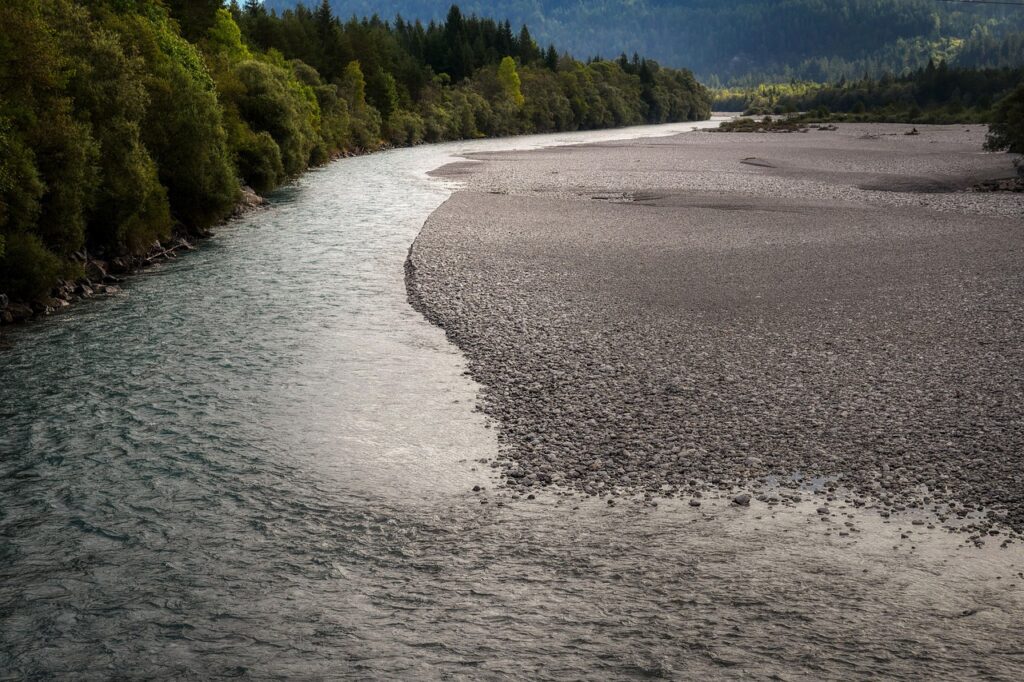
5. **The Lech River, Füssen – Danny and Willie’s Rowboat Escape**Adding another layer of picturesque yet perilous escape routes to the film, the Lech River, which gracefully flows through Füssen, becomes the backdrop for tunnellers Danny (Charles Bronson) and Willie (John Leyton)’s attempt to flee. Their plan involves taking to the water in a rowboat, a method of escape that offers a temporary reprieve from the land-based pursuit but presents its own set of challenges and dangers. This serene natural setting is beautifully contrasted with the high stakes of their journey.
The specific location for this scene is along Sebastianstraße, where Danny and Willie embark on their watery escape, heading west toward Lechbrücke, also known as Lechhalde Bridge. The visual of the two men rowing through the tranquil, yet strategically vital, waters of the Lech River perfectly encapsulates their resourcefulness and determination. The river, with its clear, flowing currents and scenic banks, might appear peaceful, but for the escapees, it was another unpredictable element in their desperate bid for freedom, far from the ‘escape-proof’ confines of Stalag Luft.
For film enthusiasts exploring Füssen, a visit to the Lech River and the area around Sebastianstraße offers a chance to visualize this iconic moment. The enduring presence of the Lechbrücke serves as a direct link to the scene, allowing fans to appreciate the strategic significance of the river in the escape plan. It’s a testament to the film’s detailed use of its German surroundings, integrating natural landscapes into the very fabric of the thrilling narrative, providing both visual splendor and narrative tension.

6. **’Café Suzette’ in Füssen – Sedgwick’s Close Call**One of the most memorable and internationally flavored scenes in “The Great Escape” takes place at the ‘Café Suzette,’ a location supposedly in ‘Toulouse, France,’ but in reality, meticulously constructed on a terrace in Füssen. This ingenuity in using German locations to stand in for other European settings showcases the production’s cleverness and resourcefulness. The café, a beacon of apparent normalcy in a world turned upside down by war, becomes a focal point for a dramatic turn of events for Sedgwick (James Coburn).
This crucial scene unfolds on the terrace on Tiroler Straße, specifically at the southern end of the Lechbrücke (Lechhalde Bridge), the same bridge that factors into Danny and Willie’s river escape. It’s within this seemingly innocuous setting that Sedgwick experiences an unexpected and alarming encounter. A waiter informs him, to his surprise, that there’s a phone call for him – an event that, moments later, precedes the swift and decisive action of the French Resistance, who take out three Nazi officers in a sudden, explosive burst of violence.
The ‘Café Suzette’ scene is a masterclass in tension and quick, decisive action, highlighting the broader resistance efforts across Europe that the escapees would have relied upon. While the physical café set is no longer there, the location on Tiroler Straße and its proximity to the Lechbrücke allows fans to vividly imagine the sequence. It’s a powerful reminder of the hidden dangers and unexpected allies that characterized the desperate scramble for freedom, and a prime example of how “The Great Escape” leveraged its German surroundings to create a convincingly international escape narrative.
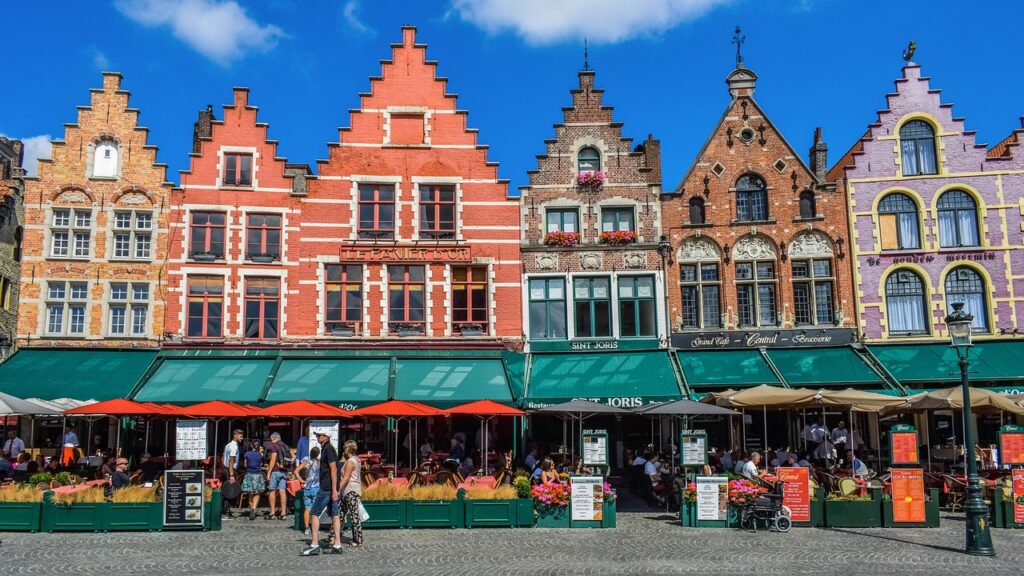
7. **Markt Schwaben – Sedgwick’s Initial Bicycle Acquisition**Sedgwick, played with cool confidence by James Coburn, initiates his solo escape route in a particularly understated yet determined manner, by calmly stealing a bicycle. This seemingly simple act marks the beginning of his journey, a pursuit of freedom that is as individualistic as it is audacious. The scene underscores Sedgwick’s resourcefulness and ingenuity, immediately establishing his character as one who thinks on his feet and adapts to the circumstances of his escape.
The real-world location for this iconic bicycle theft was Ebersberger Straße in the town of Markt Schwaben, situated some 15 miles east of Munich. This bustling street, characteristic of a Bavarian town, provided the perfect backdrop for Sedgwick to nonchalantly blend in before making his move. As he pedals away, becoming one with the pastoral surroundings, his action symbolizes a defiance against captivity and a determined stride towards liberation, embodying the individual spirit of the prisoners of war.
Ebersberger Straße in Markt Schwaben is not just a filming location; it’s a vibrant part of the Bavarian region, home to various establishments and holding cultural significance with the St. Margaret Church. For fans, visiting Markt Schwaben offers a chance to connect with this initial, quiet act of rebellion. It’s a moment that, while lacking the explosive action of other escape sequences, highlights the everyday courage and cleverness required to survive and seek freedom in extraordinary circumstances, setting Sedgwick on his distinct and eventful path across Europe.
Having explored the confines of ‘Stalag Luft’ and the initial, desperate dashes for freedom, our journey now broadens, venturing across the diverse and often surprising real-world German landscapes that lent unparalleled authenticity to the more ambitious, climactic escape attempts in “The Great Escape.” These settings, from serene villages to bustling transportation hubs and breathtaking natural wonders, were not merely backdrops but integral components that shaped the film’s most iconic sequences and underscored the immense scale of the prisoners’ pursuit of liberty.
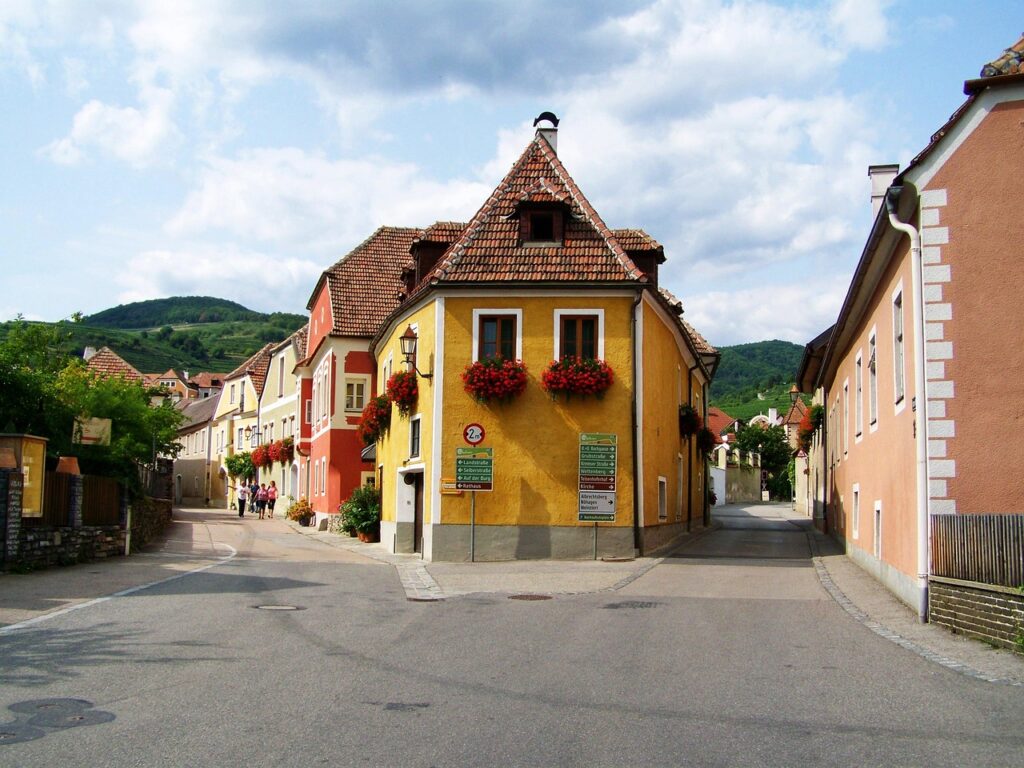
8. **Speiden – Sedgwick’s Scenic Bicycle Ride**Following his quiet act of rebellion in Markt Schwaben, Sedgwick, portrayed with cool confidence by James Coburn, continues his solo escape, cycling nonchalantly through the picturesque German countryside. His path takes him through the quaint village of Speiden, a small settlement located near Eisenberg, approximately seven miles northwest of Füssen. This segment of his journey is a masterclass in blending in, as Sedgwick attempts to become one with the pastoral surroundings, a stark contrast to the high-tension confines of the prison camp.
The visual charm of Speiden is further enhanced by the prominent sight of Wallfahrtskirche Maria Hilf. This 17th-century pilgrimage church, with its distinctive ‘onion’ dome, serves as a prominent landmark in the scene, anchoring Sedgwick’s journey in an authentic Bavarian setting. The inclusion of such a historically significant and visually striking architectural feature adds a layer of realism and cultural depth to his escape, reminding viewers of the rich tapestry of the German landscape he is navigating.
This seemingly tranquil bicycle ride, however, is anything but peaceful for Sedgwick. Every pedal stroke is fraught with danger, every glance over his shoulder a potential encounter with his pursuers. The serene beauty of Speiden and the presence of the historic church juxtapose sharply with the underlying tension of his desperate bid for freedom, highlighting the constant threat of discovery that shadowed every escapee, even in the most idyllic of settings. It’s a powerful illustration of the meticulous attention to detail that transformed real places into vital parts of a thrilling narrative.
9. **Pfronten-Ried Station – Sedgwick’s Train Boarding**Sedgwick’s resourcefulness takes another turn as he transitions from bicycle to rail, arriving at Pfronten-Ried Station to continue his journey. This station, located in the village of Pfronten, a town approximately ten miles west of Füssen, becomes a critical juncture in his escape, demonstrating his adaptability and determination to exploit every available avenue for freedom. The choice of a goods train, specifically, speaks to his calculated risk-taking and desire for anonymity.
Bahnhof Pfronten-Ried, situated on Ladehofstraße, served as the real-world location for this pivotal scene. Here, Sedgwick attempts to blend in with the cargo, boarding a goods train in a bid to travel further across Germany, hopefully towards a neutral border. This method of escape is inherently more perilous, relying on stealth and the chaotic nature of freight transport to avoid detection by the ever-vigilant authorities. It represents a significant escalation in the scope and ambition of his individual escape plan.
For fans retracing the footsteps of Sedgwick, visiting Pfronten-Ried Station offers a tangible connection to this dramatic moment. While the specific platforms or loading docks might have changed over the decades, the presence of the station itself, functioning as a vital transportation hub, evokes the tension and the calculated risks taken by the escapees. It underscores how the film leveraged existing infrastructure to create a believable and gripping escape narrative, transforming ordinary locations into cinematic landmarks of courage.
10. **Pfronten Crossroads – Hilts’ Iconic Motorcycle Encounter**Perhaps one of the most iconic and frequently referenced sequences in “The Great Escape” features the inimitable “Cooler King,” Captain Hilts, played by the legendary Steve McQueen. His audacious escape involves not just a stolen motorbike and a German uniform but also a pulse-pounding chase that, while largely invented for Hollywood, is deeply rooted in the authentic German landscape. This thrilling segment begins at a fateful crossroads in Pfronten, the very same town where Sedgwick found his train.
The specific location for this tense encounter is the junction of Füssener Straße and Kemptener Straße in Pfronten. It’s here that Hilts, clad in a German uniform, finds himself challenged by German guards, unable to convincingly answer their queries. This critical moment triggers the legendary motorcycle chase, a sequence that perfectly encapsulates Hilts’ daredevil persona and McQueen’s unparalleled charisma. The scene became an instant classic, elevating the film’s action quotient and solidifying Hilts’ status as a cinematic icon.
It’s worth noting that Steve McQueen, a renowned motorcycle enthusiast, performed most of his own stunts for this sequence, adding an unparalleled layer of authenticity and excitement that few actors could achieve. While the broader motorcycle chase was indeed a creative addition by the filmmakers to showcase McQueen’s skills, its grounding in real German roads, like these Pfronten crossroads, lent a powerful sense of realism to the fictionalized drama. For fans, visiting this junction offers a direct link to the film’s most thrilling and memorable action set-piece.
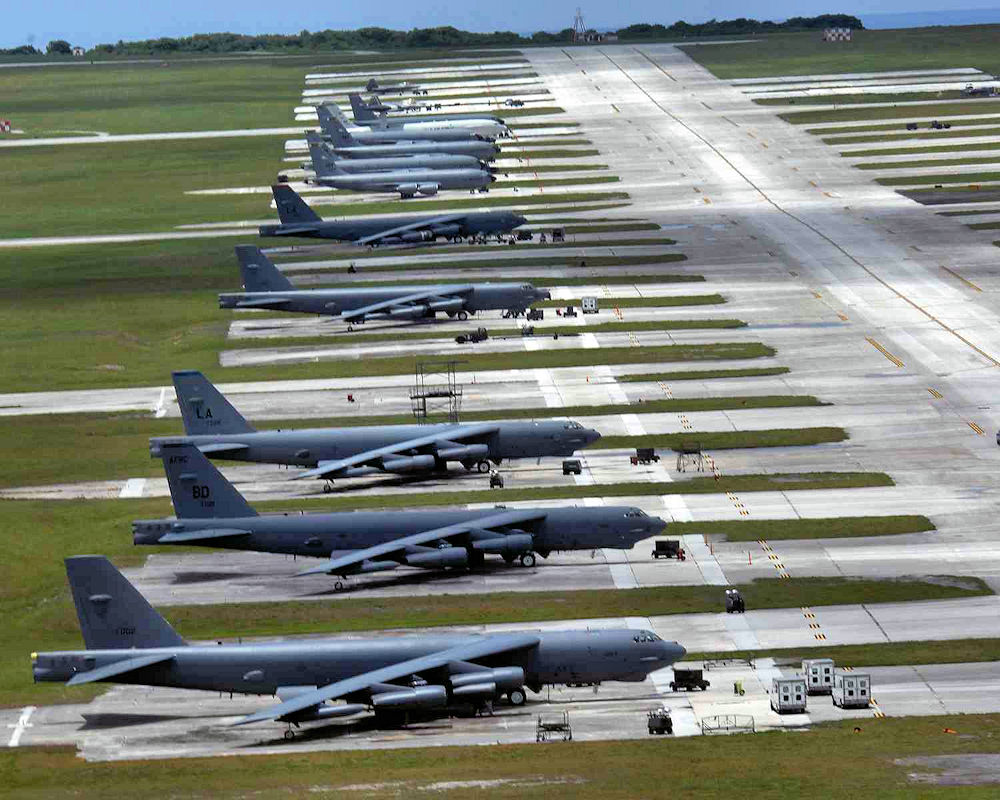
11. **Landsberg Air Base / Fliegerhorst Penzing – Hendley and Blythe’s Aerial Ambition**Stepping up the ambition to an entirely new level, “Scrounger” Hendley (James Garner) and “Forger” Blythe (Donald Pleasence) embark on arguably the most audacious escape attempt of all: stealing a plane. Their daring plan takes flight from the now-closed Landsberg Air Base, also known as Fliegerhorst Penzing. This pivotal location is situated near Penzing, a few miles east of Landsberg am Lech, and to the west of Munich, providing a vast, open space for their high-stakes gambit.
The sheer audacity of this aerial escape underscores the incredible lengths to which the prisoners were willing to go for freedom. Moving beyond ground-based transport, Hendley and Blythe’s scheme required not only meticulous planning but also the extraordinary courage to commandeer an aircraft in enemy territory. The air base, a symbol of military control, becomes their launchpad for liberation, representing a profound psychological and physical break from the constraints they had endured.
While Fliegerhorst Penzing is no longer an active air base, its historical significance as a real-world military installation lends immense credibility to this dramatic cinematic moment. For dedicated fans, understanding that such a monumental scene was filmed at an authentic location, rather than a fabricated set, deepens the appreciation for the filmmakers’ commitment to realism. It serves as a powerful reminder of the incredible risks taken and the ingenuity displayed by the escapees in their relentless pursuit of the impossible.

12. **Neuschwanstein Castle – A Royal View on a Perilous Flight**As Hendley and Blythe soar through the Bavarian skies in their stolen aircraft, their flight path takes them over one of Germany’s most breathtaking and iconic landmarks: Schloss Neuschwanstein. This aerial view of the majestic “fairytale castle of Bavaria’s King Ludwig II” adds an extraordinary visual dimension to their perilous journey, momentarily interweaving their desperate escape with the serene beauty of the Bavarian Alps. It’s a striking contrast that highlights the film’s masterful cinematography.
Neuschwanstein Castle, a 19th-century historicist palace nestled in the foothills of the Alps, is renowned worldwide for its enchanting, storybook appearance. It’s a location so grand and distinctive that it has also famously appeared in other films, such as “Chitty Chitty Bang Bang.” Its inclusion in “The Great Escape” as a backdrop for the plane escape not only provides stunning scenery but also subtly underscores the vastness of the landscape the prisoners must traverse to reach safety.
There’s a poignant irony in this moment: while the landscape below unfurls in spectacular beauty, with the castle a jewel in the crown, Hendley and Blythe are in the gravest of dangers. The film’s context notes there’s a “price to be paid for sightseeing,” emphasizing that this picturesque detour is far from a leisurely flight. For audiences, it elevates the drama, showing a fleeting glimpse of grandeur against the high stakes of their desperate aerial bid for freedom, firmly cementing the film’s connection to Germany’s rich historical and natural heritage.
13. **Frauenried am Irschenberg – The Crash Landing**The ambitious flight of Hendley and Blythe, despite its initial success and breathtaking scenery, ultimately comes to a dramatic and tragic end. Their stolen plane comes down to earth in a field outside the small village of Frauenried am Irschenberg, located approximately 30 miles southeast of Munich. This crash landing, occurring just “20 minutes from the safety of the ‘Swiss border’,” marks a heartbreaking near-miss in their valiant attempt at freedom.
The setting for this poignant scene, with the Maria-Geburt-Kirche visible in the background, grounds the high-stakes drama in an authentically rural German landscape. The contrast between the peaceful village and the wreckage of the plane amplifies the tragedy, highlighting the brutal reality of their pursuit. This specific, identifiable location transforms a generic field into a memorable site of cinematic despair and the ultimate cost of a failed escape attempt.
For fans of “The Great Escape,” Frauenried am Irschenberg represents one of the film’s most emotionally charged moments. Standing in such a place, one can almost feel the weight of the characters’ dashed hopes and the immense sacrifices made in the quest for liberty. It is a testament to the filmmakers’ meticulous location scouting that even the scene of a crash landing contributes significantly to the film’s powerful narrative and its enduring impact on audiences.

14. **Port of Emden – Willie and Danny’s Maritime Escape**Concluding our comprehensive exploration of “The Great Escape” filming locations, we travel far from Bavaria to the northern coast of Germany, where tunnellers Willie (John Leyton) and Danny (Charles Bronson) undertake their final, desperate bid for freedom by sea. The port of Emden, situated on the north coast of Germany near the Dutch border, serves as the authentic and pivotal location for their boarding of a Swedish freighter.
This location stands out as the “only location well outside Bavaria,” demonstrating the extensive geographical scope of the escape attempts and the lengths to which the prisoners scattered across Germany. The bustling port environment provides a completely different backdrop from the forests, railway stations, and airfields previously explored, offering a new dimension to the cat-and-mouse game between the escapees and their captors. The anonymity of a large port, filled with ships and cargo, becomes their final, precarious hope.
The choice of Emden for this climactic scene underscores the film’s commitment to portraying the diverse methods and vast distances covered by the prisoners. Boarding a Swedish freighter symbolizes an international passage to safety, a final, tangible step towards the neutral territory they so desperately sought. For enthusiasts, it highlights the grand scale of the escape narrative, providing a powerful sense of closure for two of the most resourceful characters and a testament to the film’s detailed depiction of their quest for liberation.
“The Great Escape” is more than just a thrilling war film; it’s a meticulously crafted narrative brought to life by a profound commitment to authentic German locations. From the purpose-built ‘Stalag Luft’ in Munich to the picturesque Bavarian towns of Füssen and Pfronten, the serene Lech River, the historic Neuschwanstein Castle, and the far-flung port of Emden, each setting contributed invaluable depth and realism to the story. These diverse backdrops not only grounded the extraordinary events in a tangible reality but also allowed audiences to truly feel the immense scope and stakes of the prisoners’ fight for freedom. For dedicated fans and history buffs, revisiting these sites offers a unique and deeply immersive experience, connecting them directly to the cinematic magic and enduring spirit of one of Hollywood’s most cherished war epics. The legacy of “The Great Escape” truly lives on in the very landscapes that bore witness to its unforgettable story.


